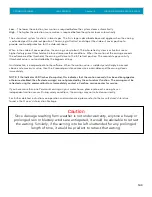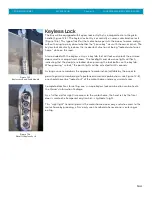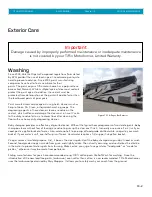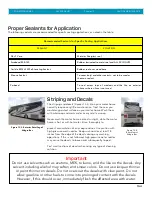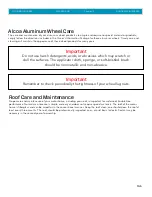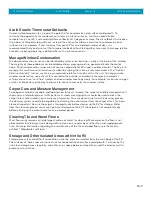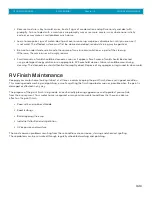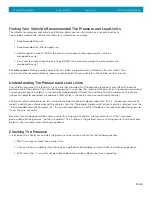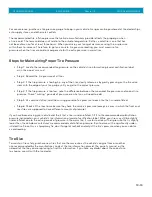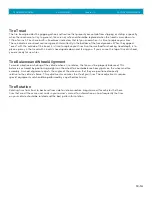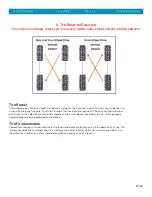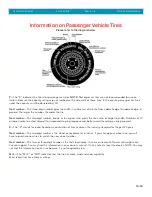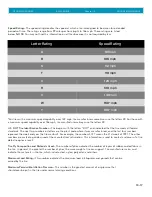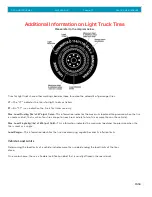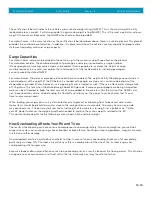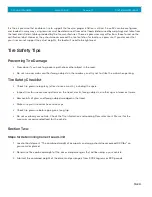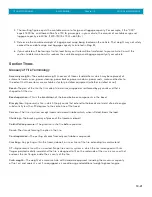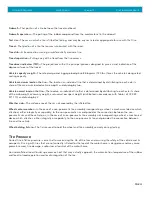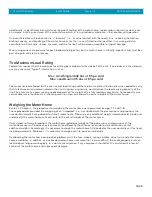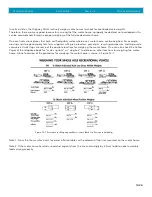
TIFFIN MOTORHOMES
–ALLEGRO BUS®
Chapter 13
ROUTINE MAINTENANCE
13-12
Finding Your Vehicle’s Recommended Tire Pressure and Load Limits
Tire information placards and vehicle certification labels contain information on tires and load limits.
These labels indicate the vehicle manufacturer’s information including:
• Recommended tire size
• Recommended tire inflation pressure
• Vehicle capacity weight (VCW—the maximum occupant and cargo weight a vehicle is
designed to carry)
• Front and rear gross axle weight ratings (GAWR—the maximum weight the axle systems are
designed to carry)
For motor homes:
Both placards and certification labels are permanently attached in the rear closet. You
can also find the recommended tire pressure and load limit for your vehicle in the vehicle owner’s manual.
Understanding Tire Pressure and Load Limits
Tire inflation pressure is the level of air in the tire that provides it with load-carrying capacity and affects the overall
performance of the vehicle. The tire inflation pressure is a number that indicates the amount of air pressure—measured
in pounds per square inch (psi)—a tire requires to be properly inflated. (You will also find this number on the vehicle
information placard expressed in kilopascals (kPa), which is the metric measure used internationally).
Vehicle manufacturers determine this number based on the vehicle’s design load limit, that is, the greatest amount of
weight a vehicle can safely carry and the vehicle’s tire size. The proper tire pressure for your vehicle is referred to as the
“recommended cold inflation pressure.” (As you will read below, it is difficult to obtain the recommended tire pressure
if your tires are not cold.)
Because tires are designed to be used on more than one type of vehicle, tire manufacturers list the “maximum
permissible inflation pressure” on the tire sidewall. This number is the greatest amount of air pressure that should ever
be put in the tire under normal driving conditions.
Checking Tire Pressure
It is important to check your vehicle’s tire pressure at least once a month for the following reasons:
• Most tires may naturally lose air over time
• Tires can lose air suddenly if you drive over a pothole or other object or if you strike the curb when parking
• With radial tires, it is usually not possible to determine under-inflation by visual inspection
Summary of Contents for 2014 Allegro Bus
Page 6: ... TIFFIN MOTORHOMES ALLEGRO BUS Chapter 1 GENERAL INFORMATION GENERAL INFORMATION 1 1 ...
Page 51: ... TIFFIN MOTORHOMES ALLEGRO BUS Chapter 5 CABINETS FURNITURE CABINETS FURNITURE 5 1 ...
Page 55: ... TIFFIN MOTORHOMES ALLEGRO BUS Chapter 6 STRUCTURAL FEATURES STRUCTURAL FEATURES 6 1 ...
Page 57: ... TIFFIN MOTORHOMES ALLEGRO BUS Chapter 7 ELECTRICAL FEATURES ELECTRICAL FEATURES 7 1 ...
Page 72: ... TIFFIN MOTORHOMES ALLEGRO BUS Chapter 8 SLIDE OUT FEATURES SLIDE OUT FEATURES 8 1 ...
Page 76: ... TIFFIN MOTORHOMES ALLEGRO BUS Chapter 9 EXTERIOR FEATURES EXTERIOR FEATURES 9 1 ...
Page 83: ... TIFFIN MOTORHOMES ALLEGRO BUS Chapter 10 INTERIOR FEATURES INTERIOR FEATURES 10 1 ...
Page 87: ... TIFFIN MOTORHOMES ALLEGRO BUS Chapter 11 PLUMBING BATH FIXTURES PLUMBING BATH FIXTURES 11 1 ...
Page 105: ... TIFFIN MOTORHOMES ALLEGRO BUS Chapter 13 ROUTINE MAINTENANCE ROUTINE MAINTENANCE 13 1 ...

